Through the year with Schütz (I)
Works for Advent, Christmas and New Year’s Eve
On 6 November 1672 (according to the Julian calendar, or 16 November in our present-day Gregorian calendar) Heinrich Schütz, Kapellmeister to the electoral court in Dresden, died there at a great age. The 350th anniversary of his death in 2022 gives us the opportunity to remember one of the most important and pioneering composers in our history of music. Heinrich Schütz’s wide-ranging output allows us to accompany him through the year in almost every combination of vocal music (almost all of his surviving works are vocal), and to commemorate him throughout the whole year with music appropriate to the season.
The highly-specialised performance conventions of our time have shifted Heinrich Schütz a little away from the mainstream and into the repertoire of specialist ensembles. This allows us to experience Schütz today in magnificent-quality performances, perhaps similar to the quality with which Schütz himself might have been able to perform his works, with, for example, the magnificent Dresden court ensemble.
But that was back then, and it is not the only way of experiencing Schütz today. He allowed many of his works to be circulated in printed copies, thereby making them available to the different kinds of ensembles of his time – court ensembles and school choirs at the city Latin schools, as well as the ‘Adjuvanten’ amateur choirs, some small, but some surprisingly large, in rural districts. He did not allow music which was unsuited to this to be printed. This applied to the Intermedia from the Weihnachts-Historie (The Christmas History) SWV 435, which only circulated in manuscript copies, and which people had to apply to borrow.
Heinrich Schütz
Weihnachts-Historie SWV 435
- Full score: Carus 20.435/50
- carus music, the Choir Coach:
Carus 73.352/02
Schütz used the prefaces to his works to convey some of his ideas about the right kind of performance, and also to illustrate different performance options, such as for the motets in Geistliche Chor-Music, which are scored for small to large forces. And examples survive of how Schütz himself realized different alternatives.
Even though he was Kapellmeister of the outstanding Dresden court ensemble, he had to postpone ambitious projects in the face of the “Boßheit der ietzigen/ den freyen Künsten widrigen Zeit” (fiendish challenges of the present time, which are unfavorable to the free arts) which the Thirty Years’ War presented; instead of this he published “small-scale art” for fewer singers and continuo in the two parts of his “Kleine geistliche Concerte” of 1636/39. These works were at the highest musical level, and although intended for soloists, some pieces lend themselves very well to choral performance.
The Becker Psalter is also a real treasure trove of easy-to-perform, but first-class musical settings. Scored for four parts, the Psalms can be performed in varied scorings of all kinds: from solo song with organ, through four-part choir, to varied settings of the verses with alternating instrumental and vocal scorings (beautifully realised on CD 83.276). There is also an option suitable for every corona situation.
We now have available to us a wide palette of music of different demands and even more performance options in the works of Heinrich Schütz – from soloistic concerti with one voice and organ, to impressive polychoral sounds. The aim of this article is to show that Schütz composed music not only for professionals and times kind to the arts, but in fact for every choir, every church choir, every combination of singers; he would have wanted to encourage groups to rediscover this terrific music which gets under the skin – either with “historic” instruments or with modern instruments. And yes, there is much by Schütz which is suitable for these corona times! In a rough order I would like to suggest a few favorite pieces to sing throughout the year, and to invite you to experiment with Schütz’s music.
Geistliche Chor-Music 1648
Schütz Complete Edition vol. 12
- Full score: Carus 20.912
- Schütz Complete recordings Vol. 1:
Carus 83.232
Becker-Psalter
- Schütz Complete recordings Vol. 15:
Carus 83.276
Advent, Christmas, New Year’s Eve
Advent is under-represented in the works of Heinrich Schütz; in the 17th century it was a “quiet time” of preparation for Christmas. There are some Advent texts in the Geistliche Chor-Music of 1648, for example, “O lieber Herre Gott, wecke uns auf” SWV 381 (text by Martin Luther after the pre-Reformation Advent collect “Excita, Domine”) or a text from the Gospel reading for the 2nd Sunday in Advent in the motet “Sehet an den Feigenbaum” SWV 394 (St Luke 21,29–31.33). Schütz set this seven-part motet for performance by a mixed instrumental-vocal group. In the preface he wrote that “it can be performed with special effect with the parts not doubled, tripled, etc. but with the vocal and instrumental parts divided”. In “Sehet an den Feigenbaum” Schütz scored the soprano II and tenor I parts for singers, whereas all the other parts should be performed instrumentally. Performers can be very free in their choice of instruments; it is more important to produce a homogenous sound and that the vocal parts can be clearly heard than that instruments from Schütz’s time are used. And the motet can even be performed with just two voices and organ (and the vocal parts can of course be sung solo or chorally). Many motets can be performed in this way, it only matters that the text is sung in full.
Part I of the Kleine Geistliche Conzerte contains one of the very few chorale settings by Schütz: the Advent hymn “Nun komm, der Heiden Heiland” SWV 301 (or in Latin: Veni redemptor) for two sopranos and two basses and continuo. The setting was intended for soloists, full of contrapuntal finesse, but conceivably it can also be sung by a small choral group.
For Christmas the choice is of course greater. Naturally the Weihnachts-Historie (The Christmas History) SWV 435 comes first to mind. However, this requires instrumental and vocal forces of some ability, and at 40 minutes’ duration, is almost like a small oratorio. The motet “Ein Kind ist uns geboren” SWV 384 (Isaiah 9,6.7) from the Geistliche Chor-Music can be performed by mixed vocal-instrumental forces, as described above. Here, for example, it can be sung by the two sopranos (2 sopranos and alto would also sound delightful in this motet), or even soprano I and tenor I. The other parts can be played by instruments. There are also settings of the text “Ein Kind ist uns geboren” as a short sacred concerto for four solo voices (or small choir) and continuo (SWV 302), and as a Concerto for 2 tenors and continuo (SWV 497). Likewise, there are three settings of the Christmas antiphon “Hodie natus est”: in Latin as a Concerto for soprano, tenor and continuo (SWV 315), and as a six-part motet (SWV 456), which once again invites performance by different forces. For the German version, Schütz chose an exquisite scoring – for 3 rather virtuoso soprano voices and a ripieno choir also with 3 soprano voices ad lib., naturally with continuo (SWV 439). Incidentally, color can be provided by the continuo instruments, but this is not imperative. It is also possible (and historically correct) to use solo organ, especially if the main church organ is used, as was usually the case in church in Schütz’s time.
The new lectionary of the Evangelical Church in Germany stipulates Psalm 96 for all the days of Christmas; this was set by Schütz for small, variable forces in the Becker Psalter (“Singet dem Herrn ein neues Lied” SWV 194), as a Concerto for 2 violins, soprano, and tenor, and continuo (SWV 342), and also for double choir based on a composition by Giovanni Gabrieli (SWV 463).
Psalm 121, “Ich hebe meine Augen auf zu den Bergen”, has its place on New Year’s Eve. Schütz set this psalm in both the Psalmen Davids of 1619 (SWV 31, in eight parts) and in the Symphoniae sacrae III of 1647. This setting, SWV 399, again offers opportunites for varied scorings in performance: but at least two violins, alto, tenor, and bass (preferably soloists) are required. A four-part choir and/or four instruments (strings or wind instruments) can be added to this if desired. The instruments play mainly with the choir, but there is also a section in which the three low instruments form an ensemble with the solo soprano, resulting in a delightful effect. And Psalm 121 is of course also found in the Becker Psalter (“Ich heb mein Augen sehnlich auf” SWV 226). This setting is recorded in Vol. 15 of the Schütz Complete Recording (Carus 83.276) in various different scoring combinations.
O lieber Herr Gott, wecke uns auf SWV 381
- Full score: Carus 20.381
Ein Kind ist uns geboren SWV 302
- Full score: Carus 20.302
Singet dem Herren ein neues Lied SWV 342
- Full score: Carus 20.342
Ich hebe meine Augen auf zu den Bergen SWV 399
- Full score: Carus 20.399
As a musicologist, Dr. Uwe Wolf is particularly at home in the 17th and 18th centuries. The focus of his work ranges from the time of Monteverdi and Schütz to Bach and the generation of Bach’s sons and pupils through to Viennese Classicism. He has been head of the editorial department at Carus-Verlag since October 2011. Prior to this, he worked in Bach research for over 20 years.

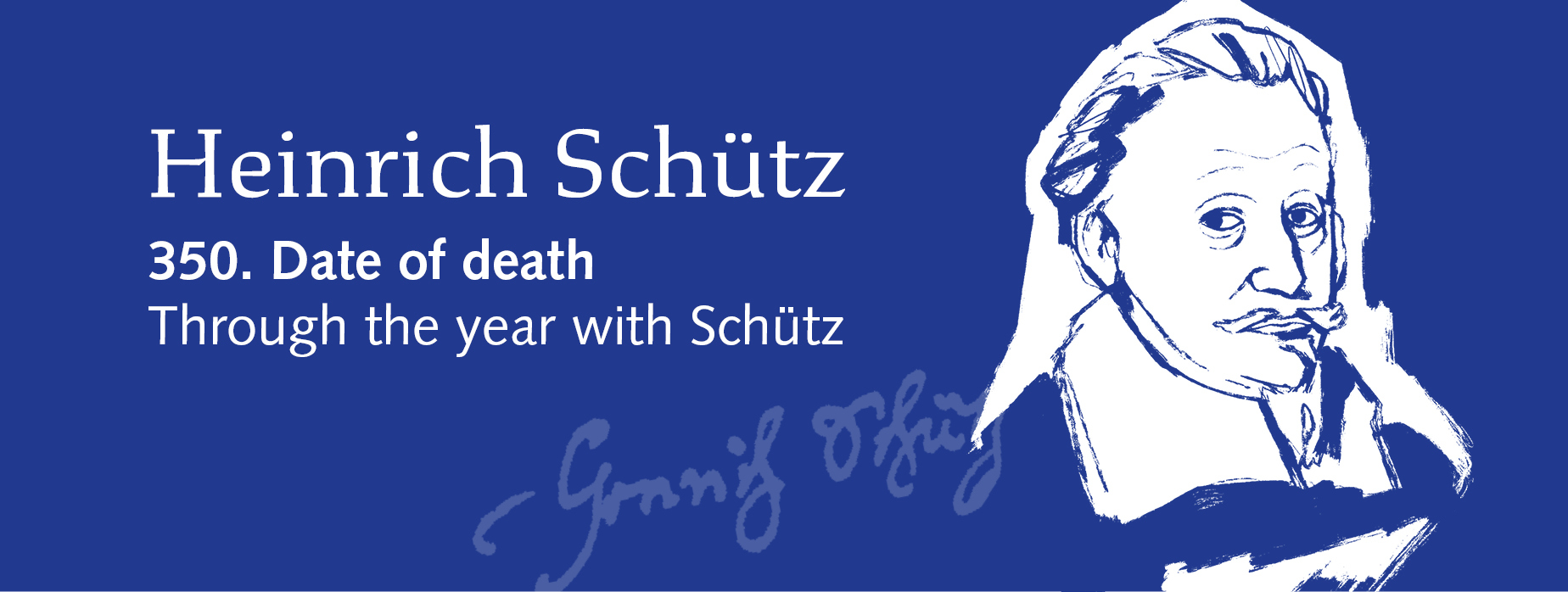
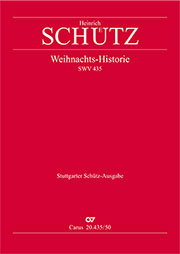
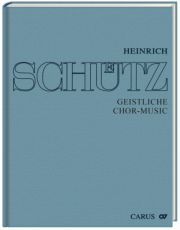
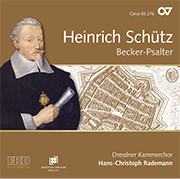
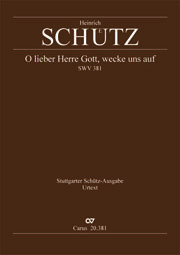
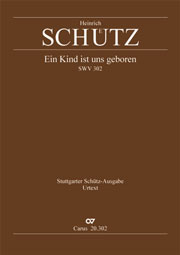
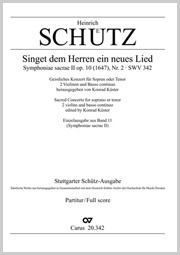
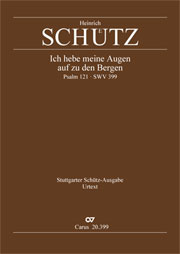
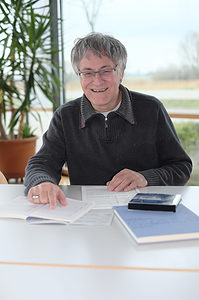
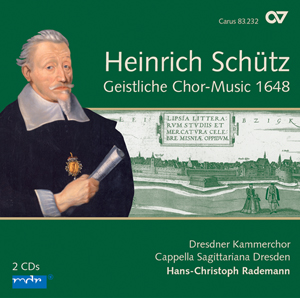

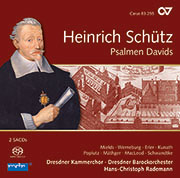


Leave a Reply
Want to join the discussion?Feel free to contribute!